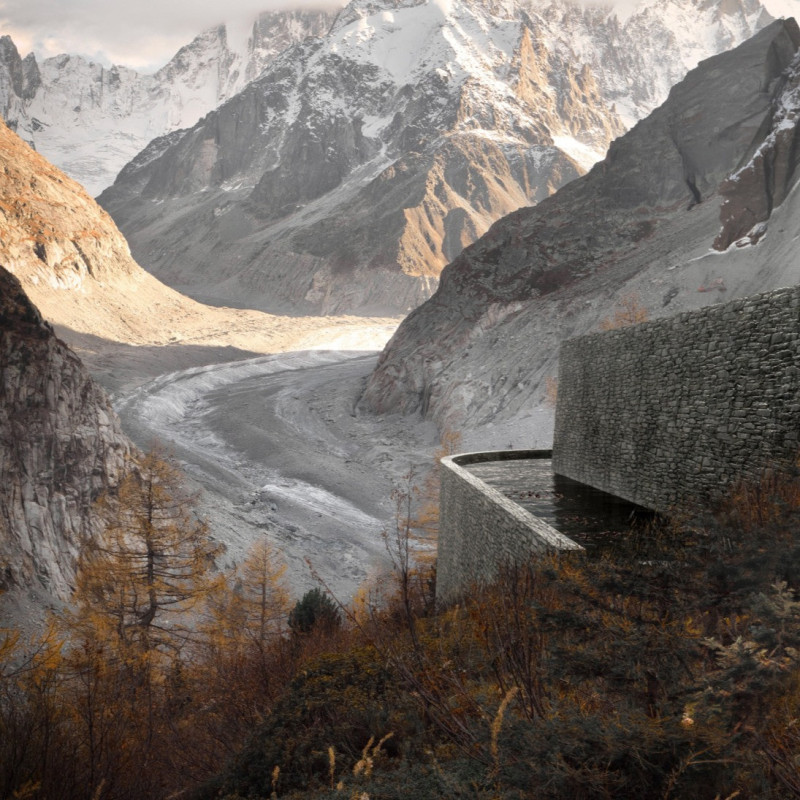5 key facts about this project
The Memorial de la Civilisation is an architectural project situated in a mountainous area that addresses the pressing issue of climate change. This design operates as both an artistic installation and a reflective space, challenging visitors to contemplate the consequences of environmental changes. The architecture promotes a deep connection between humanity and nature, serving as a reminder of the fragile ecological balance.
The project embodies a narrative that illustrates the impact of climate change, particularly the retreat of glaciers. Through extensive use of local materials and site-specific strategies, the design reflects the environmental context, creating an immersive visitor experience. The layout encourages exploration and introspection, allowing individuals to engage with the landscape meaningfully.
Material Selection and Integration of Landscape
The architectural design of the Memorial de la Civilisation is characterized by thoughtful material choices. Concrete forms the primary structure, providing strength while resonating with the surrounding mountainous terrain. Steel is employed for various structural components, including an arch that serves as a focal point within the design. This arch symbolizes a gateway to reflection, framing views that emphasize the project’s thematic connection to nature.
Local stone is used strategically, enhancing the structure's integration with the landscape. This consideration of materiality not only reinforces aesthetic coherence but also emphasizes sustainability, promoting awareness of environmental responsibilities. The project uses these materials to create a narrative of erosion and change, mirroring the very themes it seeks to address.
Visitor Interaction and Spatial Arrangements
The spatial arrangement within the Memorial de la Civilisation fosters interactive experiences for visitors. There are defined pathways leading to various components of the project, including an observatory that offers elevated views of the surrounding glaciers. This spatial organization encourages contemplation and appreciation of the changing landscape.
Incorporating a recovery basin introduces an element of dynamic interaction with water, reflecting both the natural environment and the broader discussions on ecological degradation. Stairs positioned throughout the design promote movement and engagement, guiding visitors through different perspectives and experiences within the structure.
The project sets itself apart from conventional architectural responses to similar themes through its multilayered engagement with nature. The thoughtful integration of sound, light, and material textures creates a holistic experience that extends beyond visual beauty to encompass sensory awareness. The Memorial de la Civilisation serves as a platform for dialogue on climate consciousness, urging visitors to reflect on their relationship with the environment.
Exploring the details of the architectural plans, sections, and design elements of the Memorial de la Civilisation will provide further insights into its conceptual framework and execution. Interested readers are encouraged to examine these aspects to appreciate the full scope of architectural ideas and approaches that define this project.























